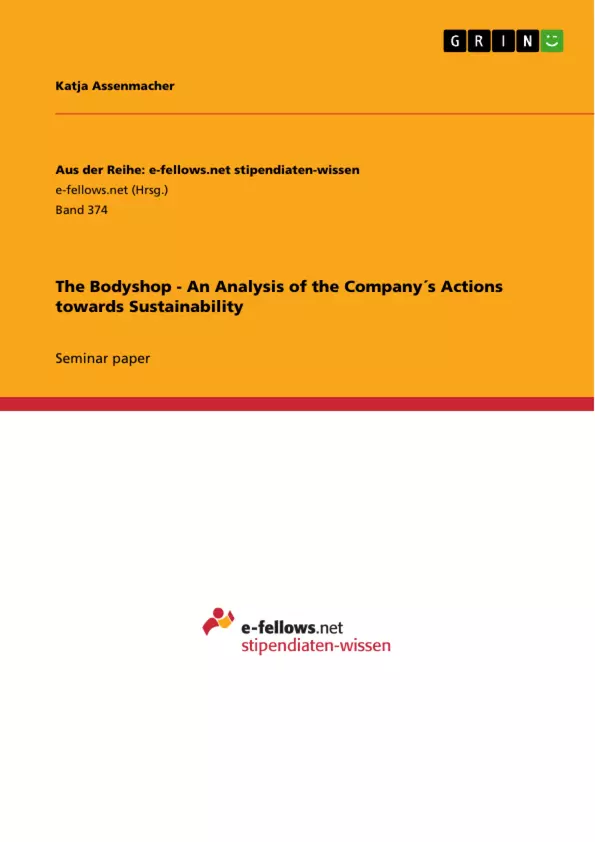The first store of The Body Shop opened on 26th March 1976 in Brighton, England. Today the company has more than 2,500 stores situated in over 60 countries around the world. In order to enter new markets the company mainly uses franchising to open stores in new business environments. (L’Oreal, 2011, p.69)
Table of Contents
- Introduction
- Part A: Analysis of context
- I. PESTEL Analysis
- a) Political
- b) Economic
- c) Sociocultural
- d) Technological
- e) Environmental
- f) Legal
- II. Key drivers
- a) Internal
- b) External
- I. PESTEL Analysis
- Part B: Sustainable Aspects
- Part C: Benchmarking
- Part D: Analysis
- I. Sustainability Mapping Framework
- II. The Biophysical Environment
- III. AUDIO Analysis
- a) Deforestation
- b) Waste Management
- IV. The Triple Bottom Line
- a) Economic
- b) Environmental
- c) Social
- Recommendations
- Conclusion
Objectives and Key Themes
This analysis aims to examine the actions of The Body Shop towards sustainability, providing a comprehensive assessment of the company's approach to this critical issue. The analysis considers both internal and external factors that influence The Body Shop's sustainability practices.
- PESTEL Analysis of the business environment
- Key drivers of sustainability within The Body Shop
- Benchmarking of The Body Shop against other companies in the cosmetics industry
- Evaluation of The Body Shop's sustainability performance through a specific framework
- Assessment of The Body Shop's commitment to the Triple Bottom Line
Chapter Summaries
- Introduction: This section introduces the topic of sustainability in the context of The Body Shop, outlining the company's history and commitment to ethical business practices. It establishes the scope and objectives of the analysis.
- Part A: Analysis of Context: This part explores the external and internal factors influencing The Body Shop's sustainability journey. It includes a PESTEL analysis of the relevant political, economic, social, technological, environmental, and legal factors, followed by an examination of key internal and external drivers of sustainability within the company.
- Part B: Sustainable Aspects: This section delves into specific aspects of The Body Shop's sustainability efforts, highlighting their practices and initiatives in areas such as ethical sourcing, environmental protection, and social responsibility.
- Part C: Benchmarking: This section compares The Body Shop's sustainability performance to other companies in the cosmetics industry, using key metrics and criteria to assess their relative strengths and weaknesses.
- Part D: Analysis: This part offers a comprehensive analysis of The Body Shop's sustainability performance, employing a specific framework to evaluate their progress and impact. It examines the biophysical environment, conducts an AUDIO analysis to assess key aspects of their sustainability practices, and explores their commitment to the Triple Bottom Line (economic, environmental, and social).
Keywords
The main keywords and focus topics include sustainability, corporate social responsibility, ethical sourcing, environmental impact, waste management, Triple Bottom Line, PESTEL analysis, benchmarking, and the cosmetics industry. This analysis specifically focuses on The Body Shop, examining its approach to these key concepts and its performance in relation to them.
- Quote paper
- Katja Assenmacher (Author), 2011, The Bodyshop - An Analysis of the Company´s Actions towards Sustainability, Munich, GRIN Verlag, https://www.grin.com/document/187767



